Morocco is a unique country with a variety of incredible landscapes. It holds cultures centuries old and a host of welcoming people. Travelling to Morocco by road can be an intense experience, sometimes feeling like a kaleidoscope of different lands and traditions, architectures and adventures that will have you at the edge of your seat.
Regardless of the season when you visit there will be a huge amount of activities available. We’re confident that by the end of your visit Morocco will have won you over.
The itinerary that we outline in this article winds through the central-eastern area of the country, joining two of the four ‘imperial cities’ of Morocco – the name referring to the fact they were all once the capitals of the country – these being the current capital Marrakech, Fes, as well as Rabat and Meknes.
What we propose, however, is not a journey aimed exclusively at visiting the cities, the major attractions are located along the route of about a thousand kilometers. Our route will have you crossing scenes of incomparable beauty, from the western edge of the Sahara and the oasis of Merzouga to the Atlas chain, all the way through the beautiful rose fields of the Valley of the Dadés, not to mention the ancient kasbahs that are still untouched by time.
Marrakech
Exotic, friendly and full of surprises. Marrakech is without a doubt a great starting point for those who want to visit southern Morocco. Thanks to its relaxed atmosphere and attractions, it’s a must for any tourist seeing the country for the first time.
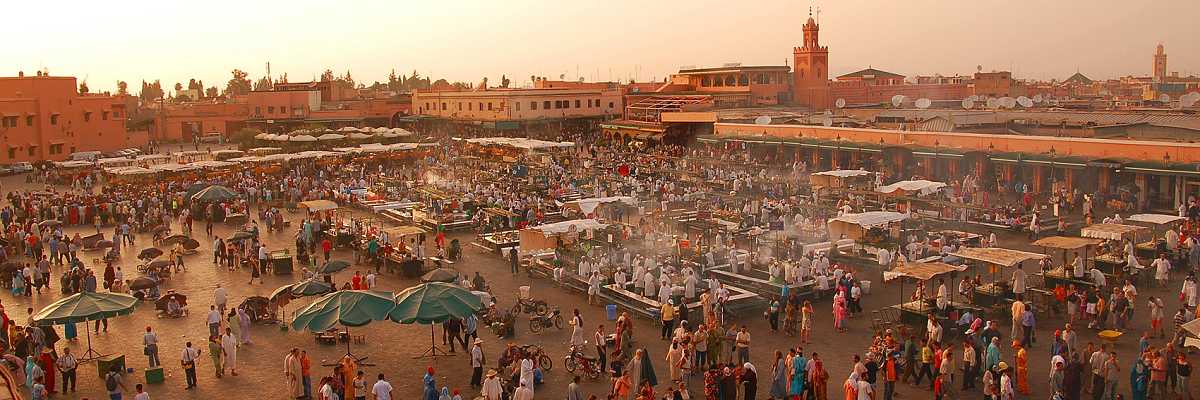
Marrakech: Djemaa el-Fna Square
Be sure to find the Jemaa el-Fna square, a place filled with snake charmers during the day and an abundance of food stalls at the night. This is an authentic part of Marrakech that will satisfy any street food lovers.
Top this with a visit to the Medina (old town), where you’ll find secret gardens surrounded by palm trees and containing swimming pools, orange and rose trees, and of course the famous Souk – another colourful market. Not to mention the Koutubia Mosque, a grand symbol of the city from whose minaret comes the ominous song of the muezzin, the one responsible for the call to prayer five times a day.
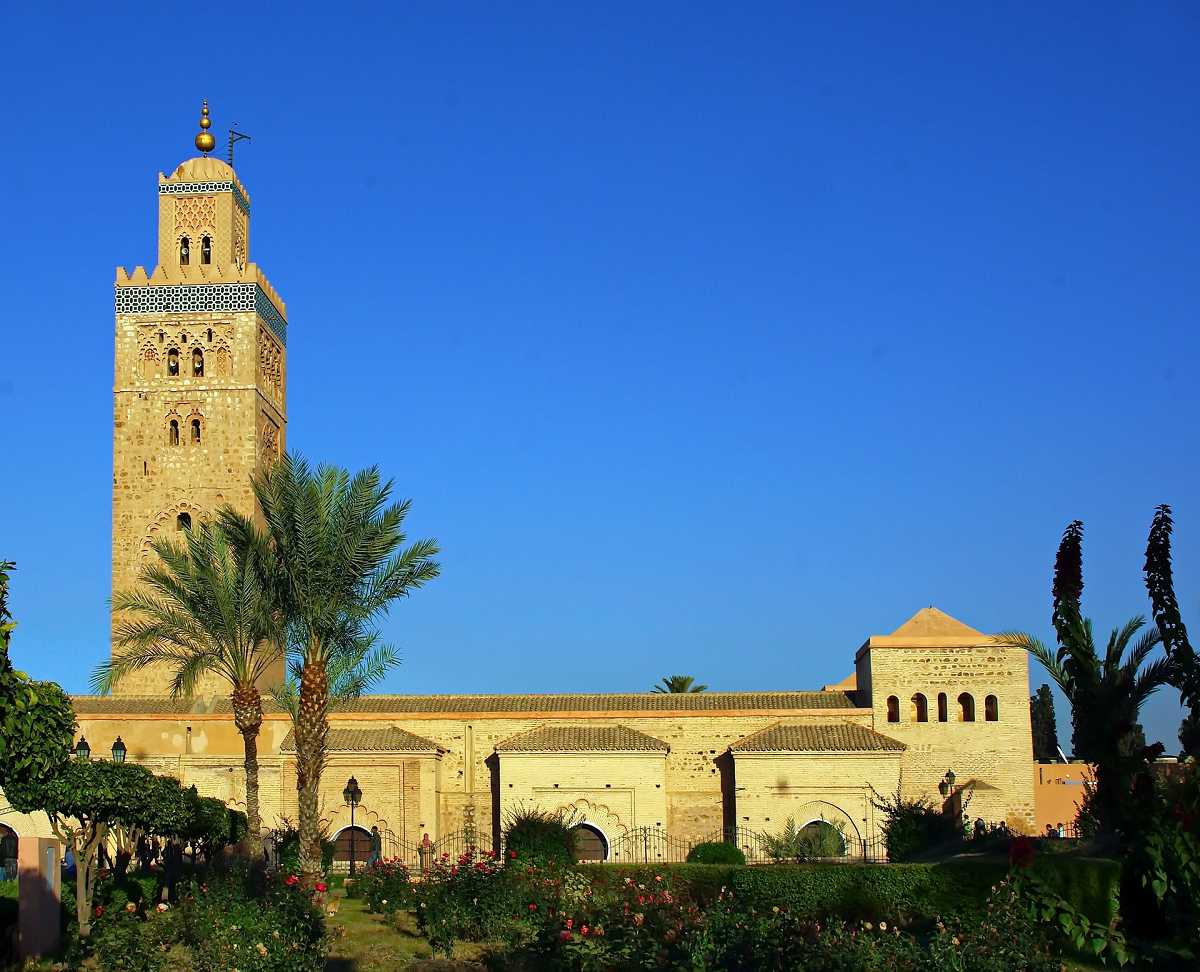
Marrakech: the Kutoubia mosque
For those who have decided to travel Morocco by road, there are several ideal destinations around Marrakech for drivable day trips. A popular one is the Ourika Valley, which can be reached by following the river of the same name. Keep going until it reaches the foothills of the High Atlas, or the beautiful Ouzoud Falls (about 150 km northeast of Marrakech), which will give you a pleasant break from the city heat that can be quite intense in the summer months.
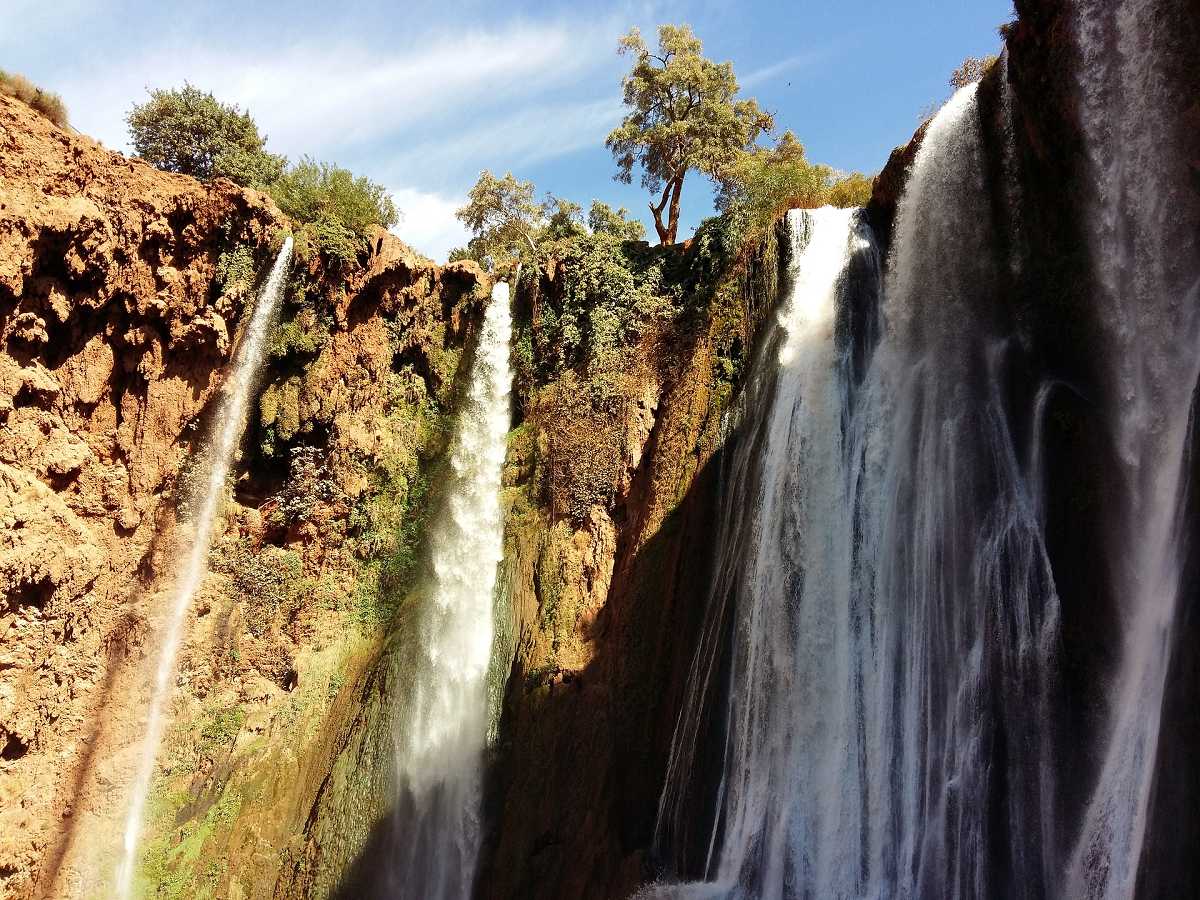
Waterfalls of Ouzud
Ait Benhaddou, Dadés Valley and Todra Gorge
Take your rental car out of Marrakech in a northerly direction following the route to Fez. Take your time and appreciate the stunning landscapes, making sure to take breaks by the roadside whenever you spot something particularly breathtaking. Following this route you will reach the region of Ouarzazate, capital of the local film industry. The popularity of this area is mainly due to the charming Kasbah of Ait Benhaddou.
This outpost, located along an ancient road, is traveled by caravans moving between Marrakech and the Sahara. It was declared a World Heritage Site by UNESCO in 1987. It’s now one of the best preserved examples of traditional Moroccan clay architecture. You’ll certainly recognize the setting of some famous historical films, including ‘Gladiator’, ‘Lawrence of Arabia’ and ‘Tea in the desert’.
Wandering around the narrow streets you’ll come across a host of craft shops, or even meet ancestors of the four families who have inhabited this old town since its beginnings. Tip: To avoid overcrowding, try to visit at sunrise or sunset.
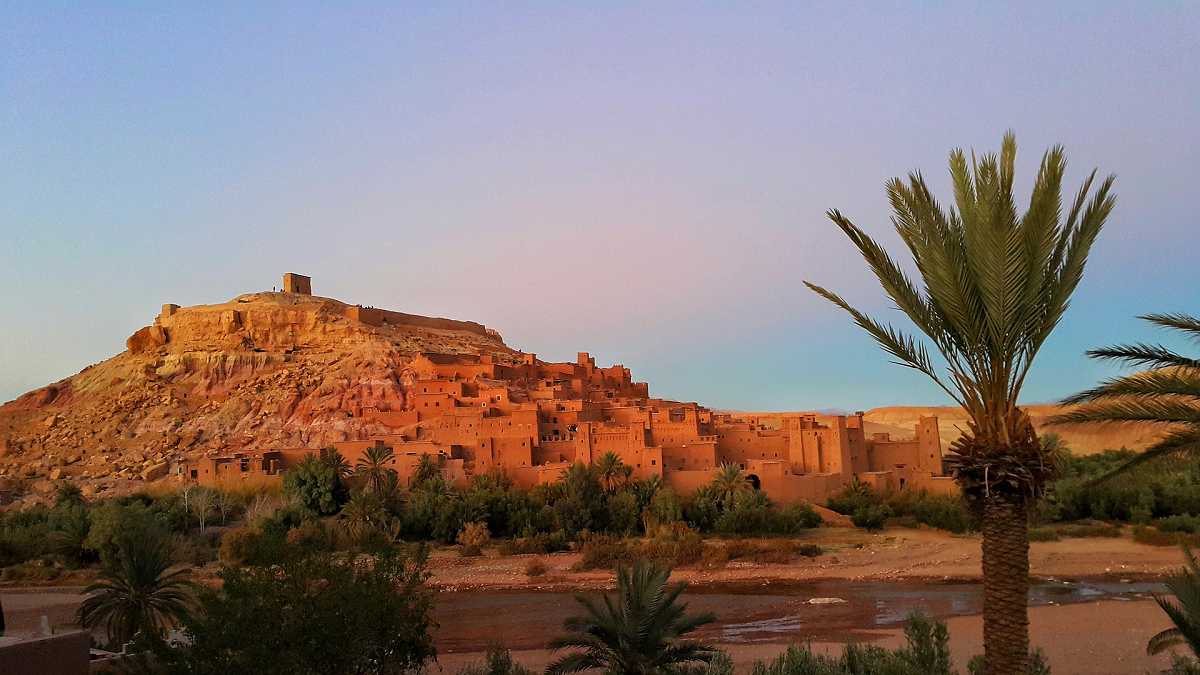
The kasba of Ait Benhaddou
Going north of Ouarzazate take Route Nationale 10 (N10) and after a few kilometres you will enter the Dadés Valley, also known as the ‘Rose Valley’. The region’s economy is based on the cultivation of the centifolia rose, introduced in the 1930’s by perfumers and industrialists in Provence. It is harvested for its fragrance and use in cosmetics during the annual harvest that takes place between April and May.
Continuing north-east along the Dadès and M’Goun river valleys you’ll arrive at El Kelaa after 50 Km, a small town surrounded by kasbahs and incredibly green fields. Now we are 85 km from Ouarzazate, on the road to Errachidia. This is known as the gates of the desert. It is here, in a place called El Kelaa, that the secrets of how to extract the properties of the centifolia rose are securely guarded. prepare yourself for an intense sensory experience.
The place is famous for its shopping, in particular the wide range of products and souvenirs with the unmistakable aroma of this signature flower. If you do not want to stay, you can continue for about 20 Km and reach Boumalne du Dadès, a village located at about 1500 meters above sea level. From here you have great views of your next destinations: the Todra Gorges and the Gorges of Dadès.
Todra and Dades Gorges
Fans of the American television series ‘Expedition Impossible’ will recognize this place immediately. Situated about 60 Km from Boumalne, the Todra Gorges is an impressive limestone canyon formed by river (wadi in the local language) whose walls in some places are over 400 metres high. It’s one of the most photographed destinations in Morocco.
The last 600 meters of the canyon are probably the most scenic, with sheer walls that in some places are just 10 meters away from the road itself. The site is also an ideal place for rock climbing thanks to the very hard and durable limestone.
Be careful in choosing the right time to visit because in the rainy season the Todra river, which winds along the valley floor, can get bigger. This makes access to the area potentially dangerous. To admire the Gorges in all their beauty try to arrive early in the morning because from 11 am the first tourist buses begin to arrive, and the place turns from a small paradise into an open-air market, certainly not without its charm but far less fascinating from a geographical point of view.
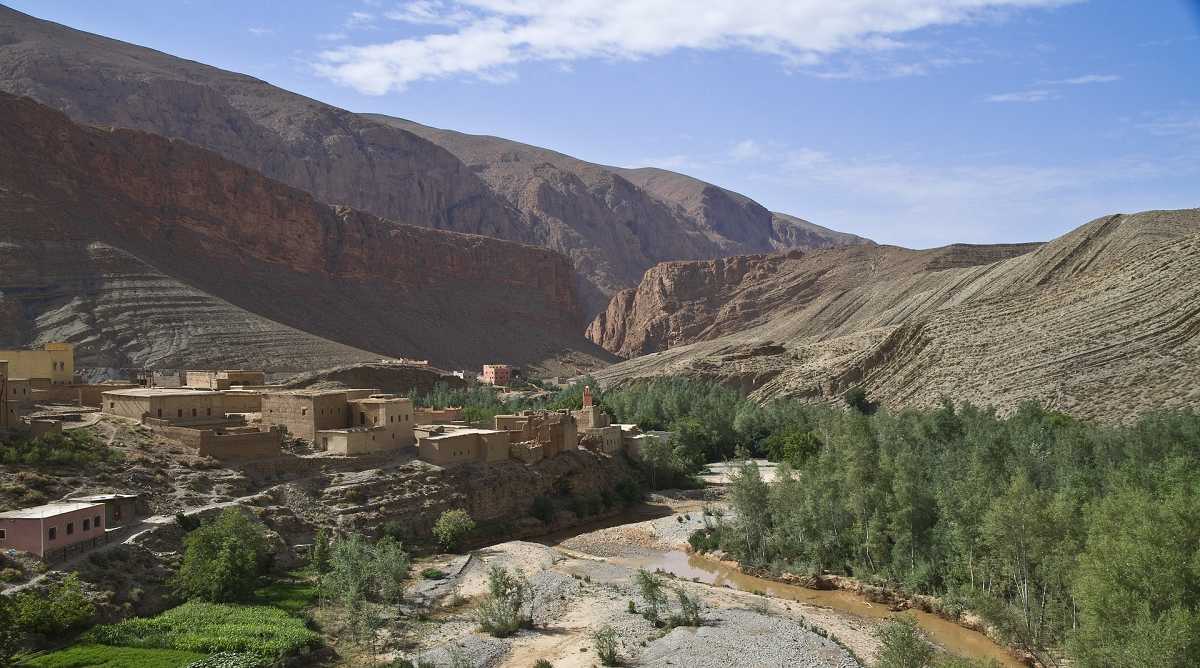
Panorama of the Dades Valley
Also near Boumalne, if you turn onto the R704 in the direction of Tamellat, you can easily reach the Dadés Gorges, another place with incredible scenery. Leaving the village behind you the landscape is initially a bit baron, that is until you reach the palm trees that contrast the red shade of the mountains.
The best viewpoint is after about 25 km. You’ll notice the gorges become tight as the road begins to climb the mountain with a series of bends all the way to the highest point. Treat yourself to a refreshing break at the hotel on the side of the mountain, from here you can enjoy a breathtaking view of a scenery below.
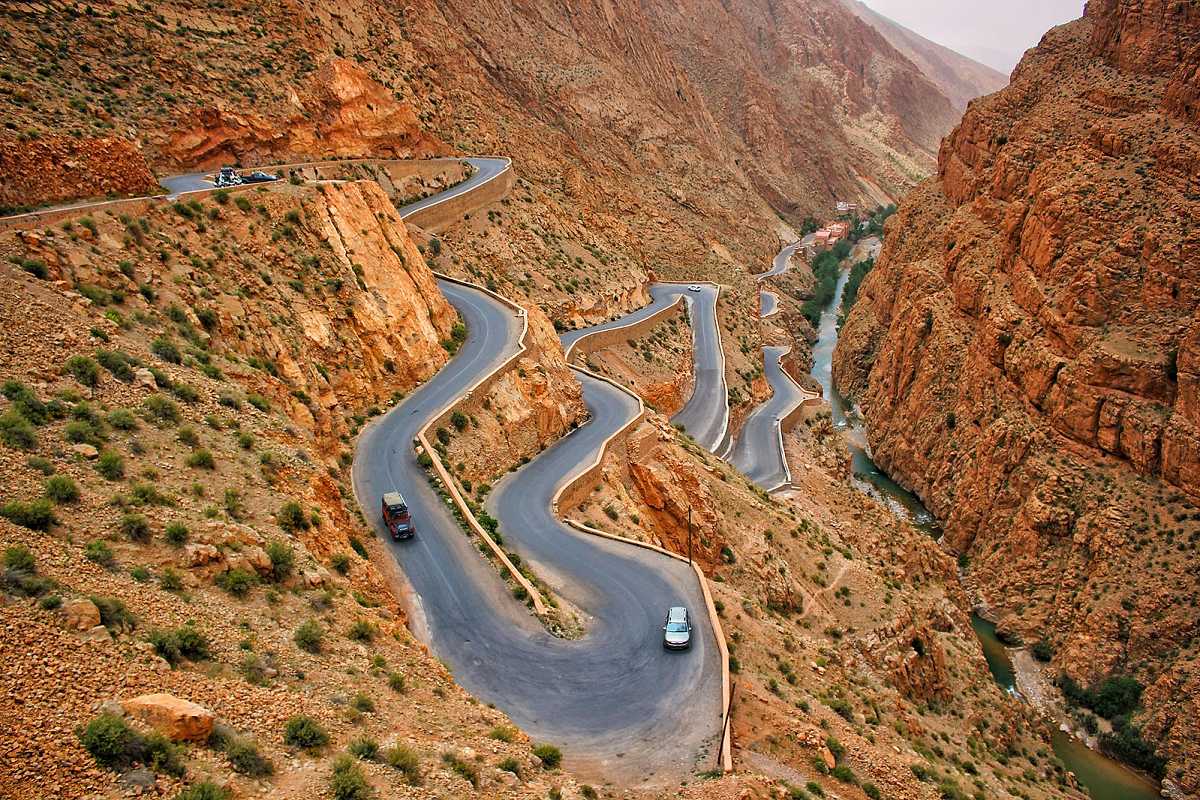
The road through the Dades Gorges
The Sahara: The oasis of Merzouga
And after the mountains comes the desert. Despite the large amount of places to visit in Morocco the oasis of Merzouga is, for many tourists, the undisputed favourite of this country. And once you’ve visited it you can see why. Whether it be the indescribable sensation of walking on the sand dunes, or walking by the town of Merzouga to the first of many oases on the back of a camel, the experience is unforgettable.
One can even spend the night in the camp of the Bedouins, listening to the stories of the nomadic population under an open night sky. Everyone has their own unique experience in this part of the Sahara desert, less than 30 kilometers from the border with Algeria, it’s a story you’ll be telling for the rest of your life.
The main assembly of Merzouga is formed by a small group of houses cut by 2 roads. One runs from the desert to Rissani, crossing a black desert of stones, the other to a selection of shops and structures where tourists can purchase food. The spectacle of the dunes, also called Erg Chebbi, is indescribable as they change colour during the day – going from pink to gold, and eventually to red. In winter you can admire something even more exciting: within the dunes a small lake forms: the Dayet Srji, which attracts hundreds of pink flamingos and storks.
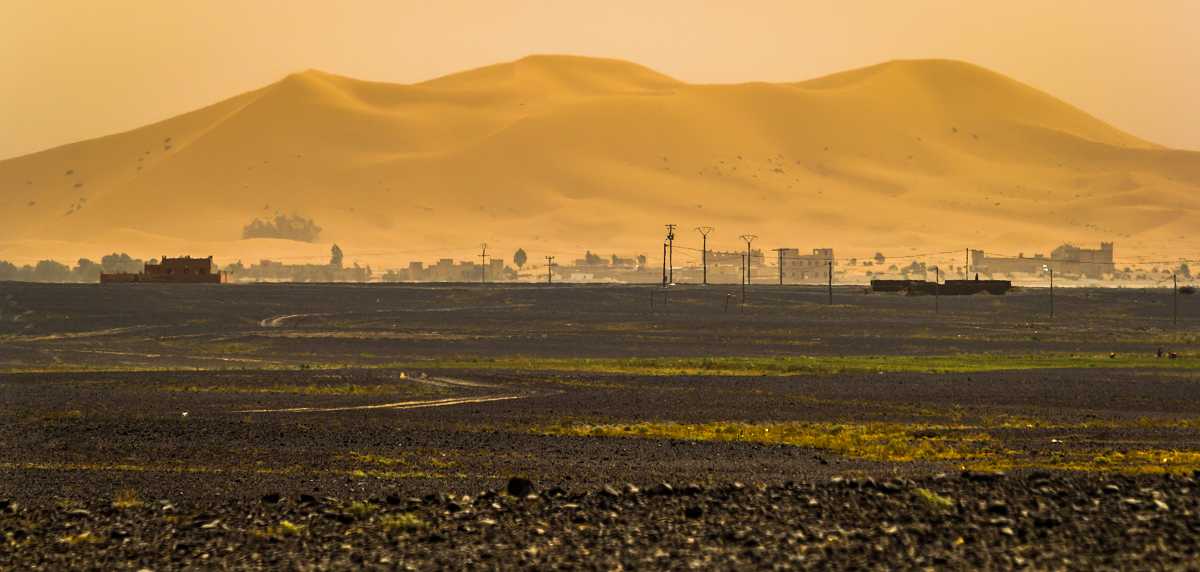
The oasis of Merzouga, with Erg Chebbi in the background and the ‘black desert’ in the foreground
In older times Merzouga was one of the main oases where caravans stopped to rest and accumulate supplies before facing the most challenging stretch of the desert. This would be along the slopes from Sub-Saharan Africa leading to the Mediterranean. Today, there are several hotels and some of them offer special packages for accommodation, such as organizing excursions in one of the bivouacs located in the desert.
If you opt for this, which we’d recommend, you can spend the night in traditional nomad tents built from the hides of goat and camel, as well as sheep wool. Spending a night in a camp with Berber music is a very special experience. You will also enjoy a communal dinner around the bonfire, waiting for dawn before you return to Merzouga.
The High and Middle Atlas: Midelt, Azrou and Ifrane
Driving North from Merzouga, pass the city of Er Rachidia, there is about 400 km of land until you reach Fes. This stretch involves crossing an area ranging in altitude known as the High and Middle Atlas. Along this road, immersed in beautiful nature, the land is full of shadows and a thousand shades of colours.
You’ll notice constant changes: sometimes the land will be desert red, sometimes green and lush with palm groves, you will even pass through the city of Midelt – not particularly famous from a tourist point of view, but famous for the production of apples and for its presence of natural crystalline structures.
Midelt was founded by the French as an outpost for mining (lead, gypsum and other minerals) in the surrounding districts of Ahouli and Mibladen, and soon by 1930 it was equipped with an electricity grid and a railway that connected it to the Mediterranean.
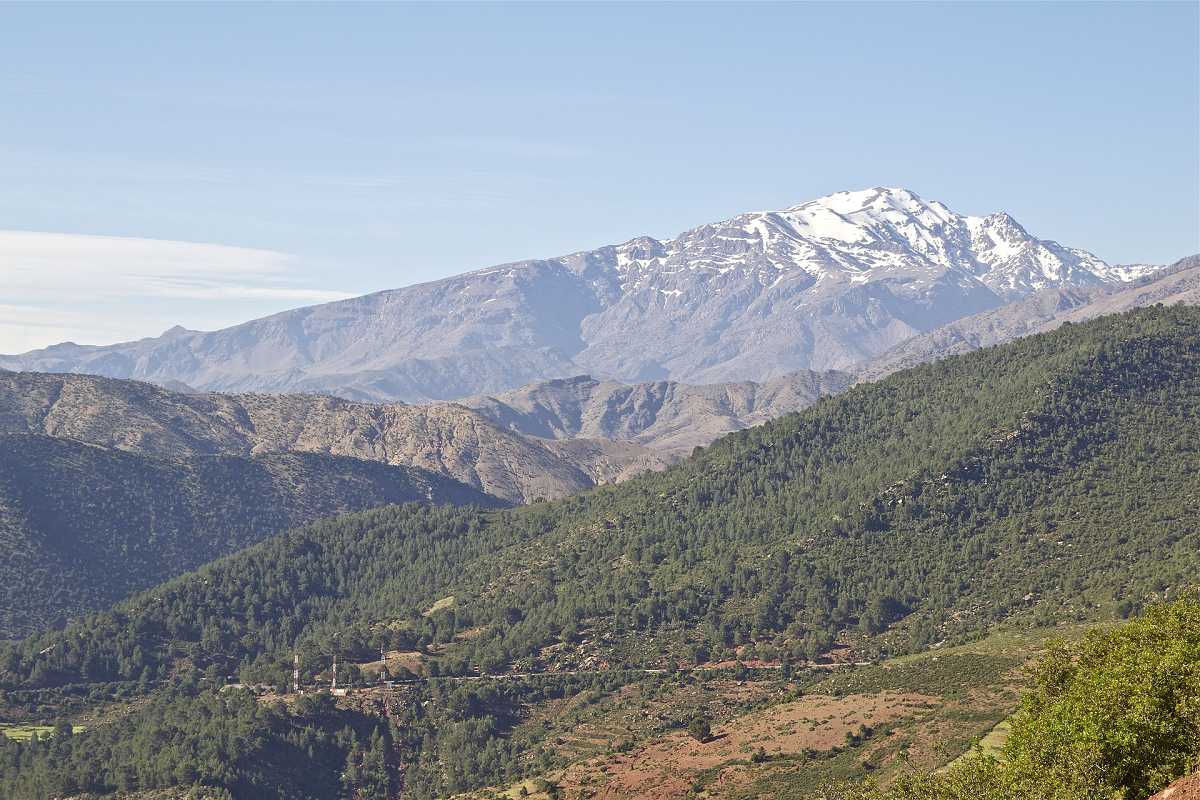
Panorama of the High Atlas, descending towards Ifrane
Midelt is about 60 kilometres away from the Col du Zad, a pass resting at an an altitude of 2,158 metres. You will cross it on the northern side of the Atlas chain. From here, making sure you’re following the N13, begins your descent to Azrou. Berber village is located in the heart of a 53 thousand hectares park. It sits on a limestone plateau bordered by forests of cedars and holm oaks, populated by a large number of monkeys, this is easily this area’s main attraction.
Before reaching Fez we suggest visiting Ifrane. It’s a very peculiar town situated at 1,650 meters high and known as the “little Switzerland of Morocco”. In winter you can actually ski and the area has a strong European imprint – the bazaars you’ve become acquainted with are quickly replaced by quaint little chalets. Don’t miss a stroll through the Atlas’ dense cedar forests, including the impressive candlestick-shaped Gourand Cedar with branches that reach 10 metres in circumference.
Fez, the Mysterious City
Fez is the second largest urban center of Morocco (after Casablanca) and is divided, like the main urban centers of Morocco, between the new city and in the old city. The latter is none other than the famous Medina of Fes el Bali, with its exuberant suq. Here you can truly see the past as you wonder through the intricate maze of walkways that wind up and down the hillside city. The medina, despite some more recent urban interventions has the same design as it did hundreds of years ago, and in a way the day to day life is much the same.
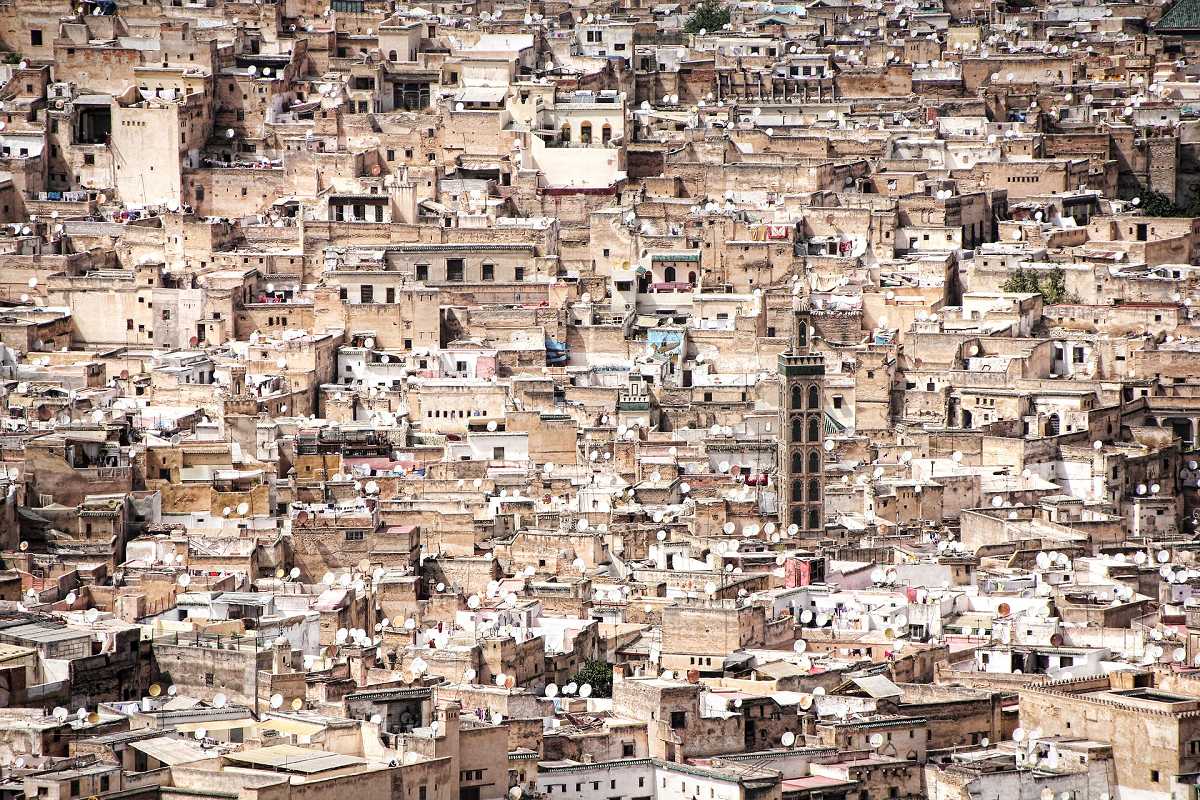
Fez: panorama of the medina
It will be a good idea, at least initially, to have a local guide who can show you Fez. The probability of getting lost in the dense maze of narrow streets that make up the historic metropolis are quite high. An unmissable attraction is certainly the Tanneries: famous because of the ‘watercolour tray’ of the Chouara tanneries, where most of the city’s famous leather is still produced.
You’ll find in Fez that the hypnotizing daily routine, suspended between past and future, will make every kilometer you took worth it to get here. So enjoy this magical city in one of the many bars or enjoying the national favourite beverage, mint tea.
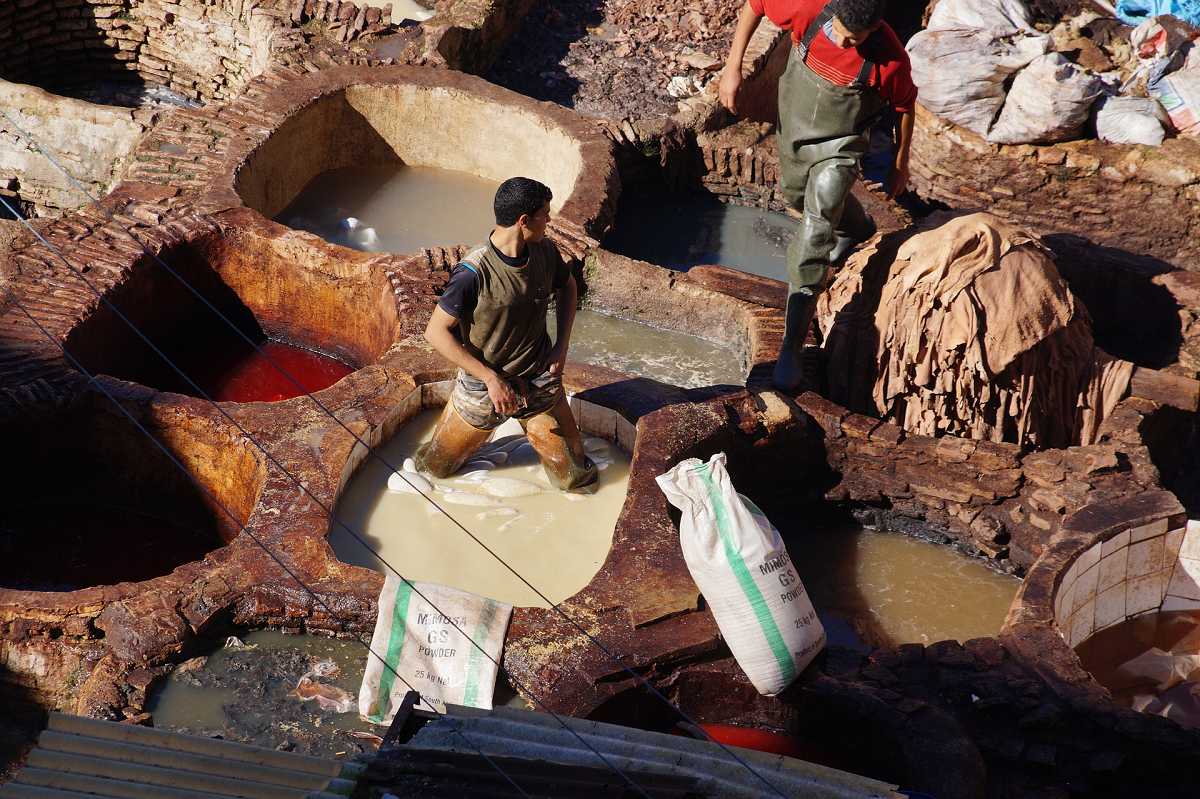
Fez: the Tanneries, where the skins are tanned
Want to explore and discover hidden Morroco at your own pace? Sixt offers a wide selection of top quality vehicles at rental locations across the country, with convenient branches in Casablanca, Tangier, Agadir, Marrakech and more.